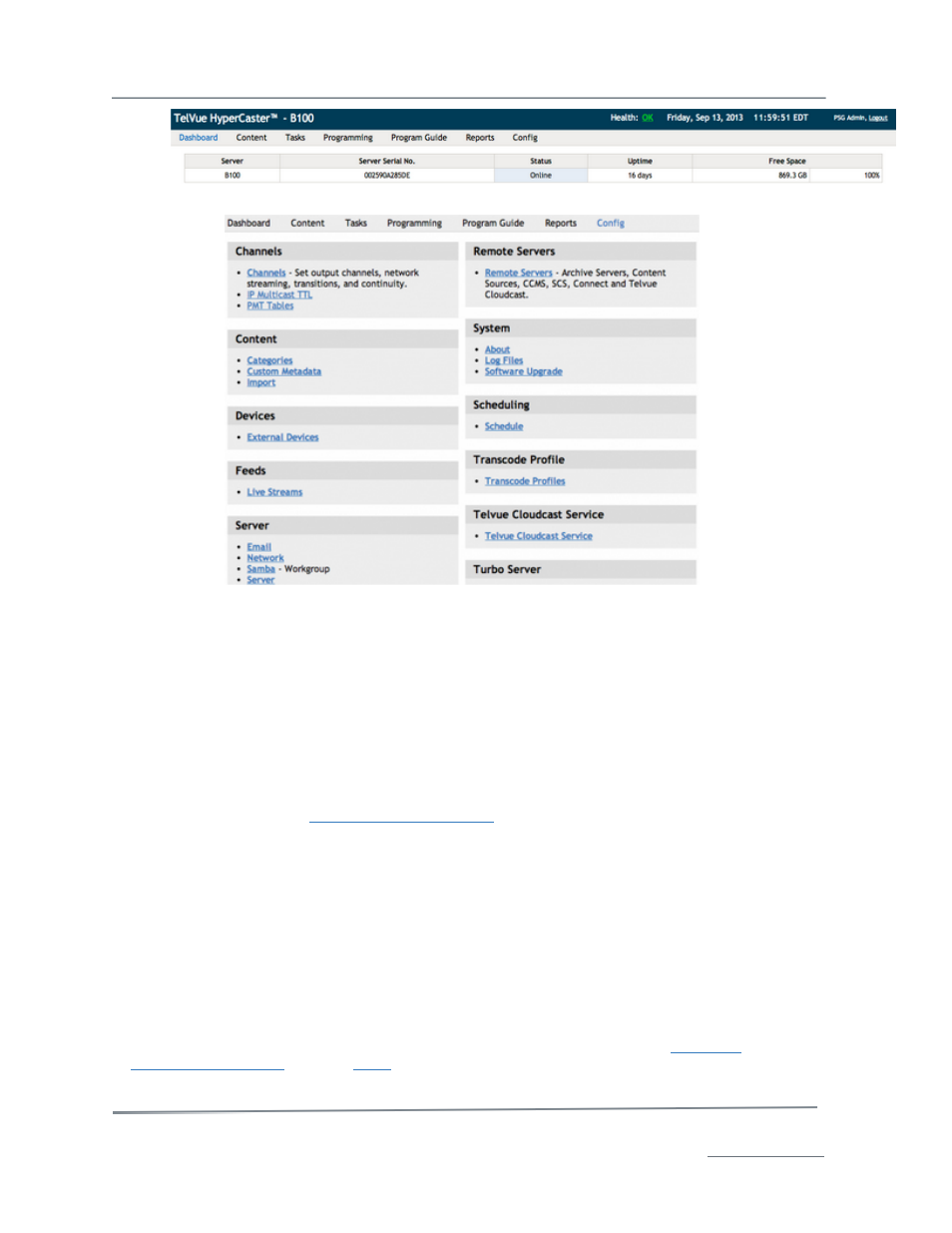Preparing content for the hypercaster – TelVue HyperCaster® User Manual
Page 7

TelVue HyperCaster
®
User Manual / v5.0 / October 2014
© 2014 TelVue Corporation 16000 Horizon Way, Suite 500, Mt. Laurel, NJ 08054
HyperCaster
®
is a registered trademark of TelVue Corporation 800-885-8886 / www.telvue.com
6
4. Click on the Config tab to display the Configuration screen.
5. Configure the channel(s) for your HyperCaster by editing the channel configuration.
6. If this HyperCaster is connected to a switch, edit the switch configuration. You can
name the devices on the input and output ports.
7. If your HyperCaster is connected to an encoder or stream source, edit the feed setup.
8. If your HyperCaster is connected to a remote server, edit the remote server
configuration
The HyperCaster is now connected to your broadcast network and ready to receive content.
Preparing Content for the HyperCaster
The TelVue HyperCaster
®
transmits compressed video content over UDP packets. Content must be
already multiplexed into an
MPEG-2 Transport Stream
, and that transport stream often must have a
constant multiplex rate (note however that does not mean the video elementary stream must have a
constant bit rate). The 4.0 version of the TelVue HyperCaster software supports variable mux rate
Transport Streams, however other equipment in your setup may not, so you may need to investigate
whether your full playout chain can support variable mux rate content.
The equipment receiving these streams can and often will have more stringent requirements.
TelVue
®
servers can aid with these downstream requirements by changing Program ID values as the
MPEG-2 TS is transmitted. However, other requirements, such as bit rate, frame rate, profile and
level, GOP structure, and more, must be set at the time of file creation or by transcoding or
multiplexing.
CableLabs and ATSC
Two common standards that broadcast video equipment will adhere to are the
CableLabs
set
of
specifications for VOD
, and the
ATSC
broadcast specifications. If your downstream equipment
requires your files to adhere to either specification, you should select a program that the provider has
verified is compliant to these specifications. If your downstream equipment does not require these
